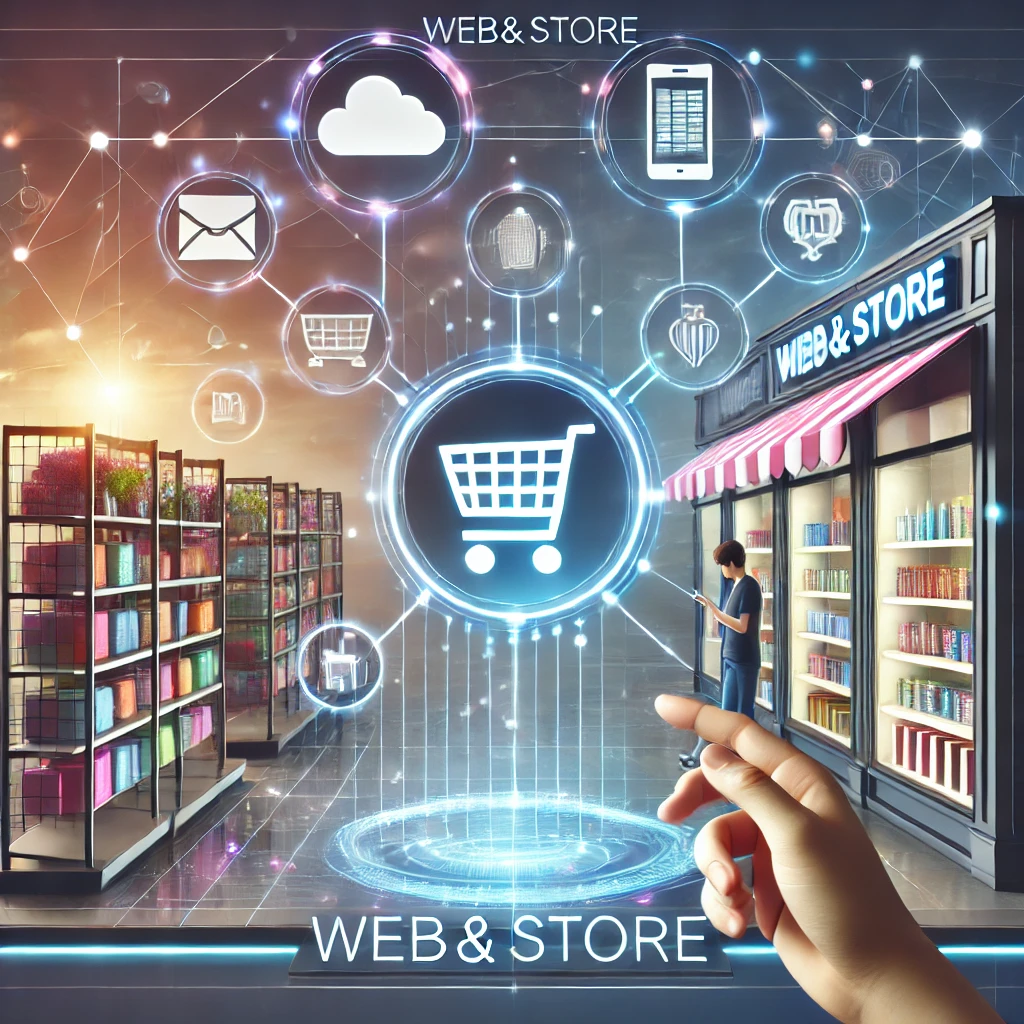Web&Store
The evolving landscape of commerce has undergone a dramatic transformation in recent years. As digital advancements continue to reshape consumer behavior, the concept of Web&Store has emerged as a powerful synergy between online and in-store shopping experiences. This hybrid approach offers businesses the opportunity to leverage the best of both worlds while catering to customer preferences for flexibility, convenience, and personalization.
What is Web&Store?
Web&Store refers to the seamless integration of online platforms (web) with physical retail spaces (store). This model allows customers to interact with a brand through digital channels while enjoying the tactile and immersive aspects of an in-store experience. From browsing and ordering online to picking up in-store or exploring physical products before purchasing digitally, Web&Store creates a cohesive ecosystem that meets diverse consumer needs.
The Key Features of Web&Store Integration
The success of Web&Store lies in its ability to merge digital and physical realms effectively. Here are some of its defining features:
- Omnichannel Customer Experience
Web&Store allows customers to transition effortlessly between online and offline channels. For instance, they can check inventory online, reserve a product, and pick it up from a nearby store. - Click-and-Collect Services
A popular feature of Web&Store models, click-and-collect enables customers to shop online and collect their purchases from a physical location, often with minimal waiting time. - In-Store Digital Enhancements
Technologies such as QR codes, virtual try-ons, and interactive displays in stores bring the digital experience to the physical space, enhancing customer engagement. - Data-Driven Personalization
By analyzing customer data across platforms, businesses can offer tailored recommendations, personalized promotions, and enhanced shopping experiences.
The Benefits of Web&Store
Integrating web and store operations presents significant advantages for both businesses and customers.
- Increased Sales Opportunities
Web&Store ensures that customers have multiple avenues to make a purchase. A customer might discover a product online but choose to buy it in-store, or vice versa. This flexibility can lead to higher conversion rates. - Enhanced Customer Loyalty
Offering seamless transitions between online and offline channels fosters trust and loyalty. Customers appreciate brands that prioritize their convenience and offer consistent quality. - Reduced Return Rates
The ability to examine products in-store before purchasing online helps customers make informed decisions, reducing the likelihood of returns. - Broader Market Reach
An integrated Web&Store strategy allows businesses to expand their reach. Online platforms attract tech-savvy consumers, while physical stores cater to those who prefer hands-on experiences.
Examples of Successful Web&Store Models
Many renowned brands have implemented Web&Store strategies to great effect.
- Nike
Nike’s stores feature digital screens for browsing products and offer seamless integration with their app, enabling customers to reserve items online and try them in-store. - Walmart
Walmart’s click-and-collect service has transformed its operations, allowing customers to order groceries online and pick them up at their convenience. - Apple
Apple’s integration of its website and stores exemplifies a true Web&Store approach. Customers can customize products online and pick them up in-store while receiving personalized assistance.
Challenges of Implementing Web&Store
Despite its advantages, the Web&Store model comes with challenges that businesses need to address.
- Logistical Complexities
Coordinating inventory between online and physical locations can be challenging, particularly during peak shopping seasons. - Technological Integration
Implementing systems that enable real-time inventory tracking, order synchronization, and customer data sharing requires significant investment and expertise. - Training Staff
Store employees must be trained to handle web-related customer inquiries and assist with digital tools effectively. - Cost Management
Operating both online platforms and physical stores simultaneously can be expensive. Businesses must ensure that their investments yield profitable returns.
The Future of Web&Store
As technology continues to advance, the Web&Store concept is poised to become even more sophisticated. Here’s what the future might hold:
- AI-Driven Enhancements
Artificial intelligence will play a pivotal role in personalizing the customer journey across Web&Store platforms. Predictive analytics, virtual shopping assistants, and chatbot interactions will enhance customer engagement. - Augmented Reality (AR) Integration
AR will bridge the gap between online and offline experiences. Customers could virtually try on clothes online and seamlessly transition to an in-store purchase if satisfied. - Sustainable Practices
Businesses may adopt eco-friendly Web&St0re models, such as offering digital receipts, minimizing packaging waste, and optimizing delivery routes for reduced carbon footprints. - Smarter Inventory Management
Advanced technologies like blockchain and IoT (Internet of Things) will enable precise inventory tracking, ensuring product availability across channels and reducing stock discrepancies.
How Small Businesses Can Leverage Web&Store
While large corporations often lead the way in innovation, small businesses can also benefit from Web&St0re integration.
- Local Click-and-Collect
Small businesses can implement simple systems for online orders with in-store pickups, providing convenience without the need for extensive infrastructure. - Social Media Integration
Leveraging social media platforms to showcase products and engage with customers creates an accessible entry point into the Web&St0re ecosystem. - Collaborative Tools
Utilizing affordable platforms like Shopify or WooCommerce enables small businesses to create an online presence that complements their physical stores.
Conclusion
The Web&Store model is a testament to the evolving nature of commerce in a digital-first world. By blending the convenience of online shopping with the tactile and personal experiences of physical retail, businesses can cater to a diverse range of customer needs. As technology continues to advance and consumer expectations grow, adopting and optimizing Web&Store strategies will be crucial for businesses looking to thrive in this hybrid era.
Embracing Web&Store is not just about staying competitive—it’s about creating meaningful and lasting connections with customers across every touchpoint.










